

As the face of the organization, the customer service team is instrumental in building and maintaining a business’s reputation.
To be a successful customer service professional, you must have a wide-ranging skillset—patience, empathy, critical thinking, and detailed knowledge of your company’s products or services.
With such a tall order, you shouldn’t also have to be an expert at building a resume. Our easy resume tips are available at your fingertips!
We’ve analyzed countless resumes and chosen the 30 best customer service resume samples to help you land your next job in 2024.
Furthermore, we’ll share our recommendations and advice so you can put your best foot forward on your resume; before you know it, you’ll also be ready to tackle your customer service cover letter!
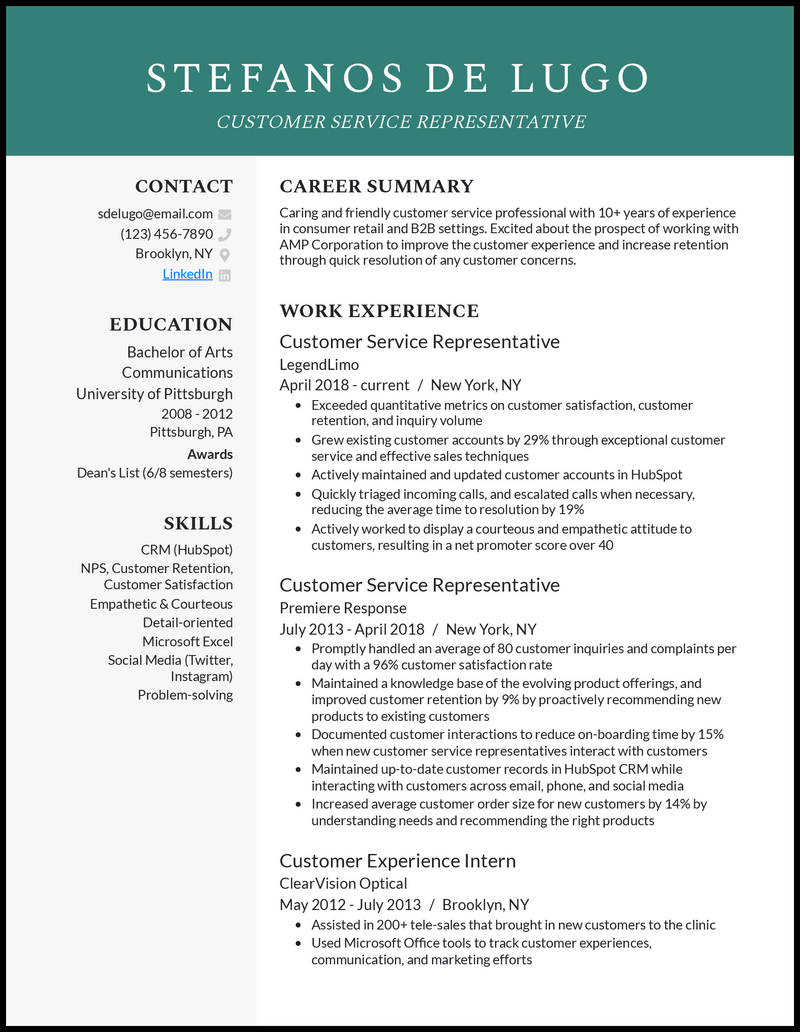
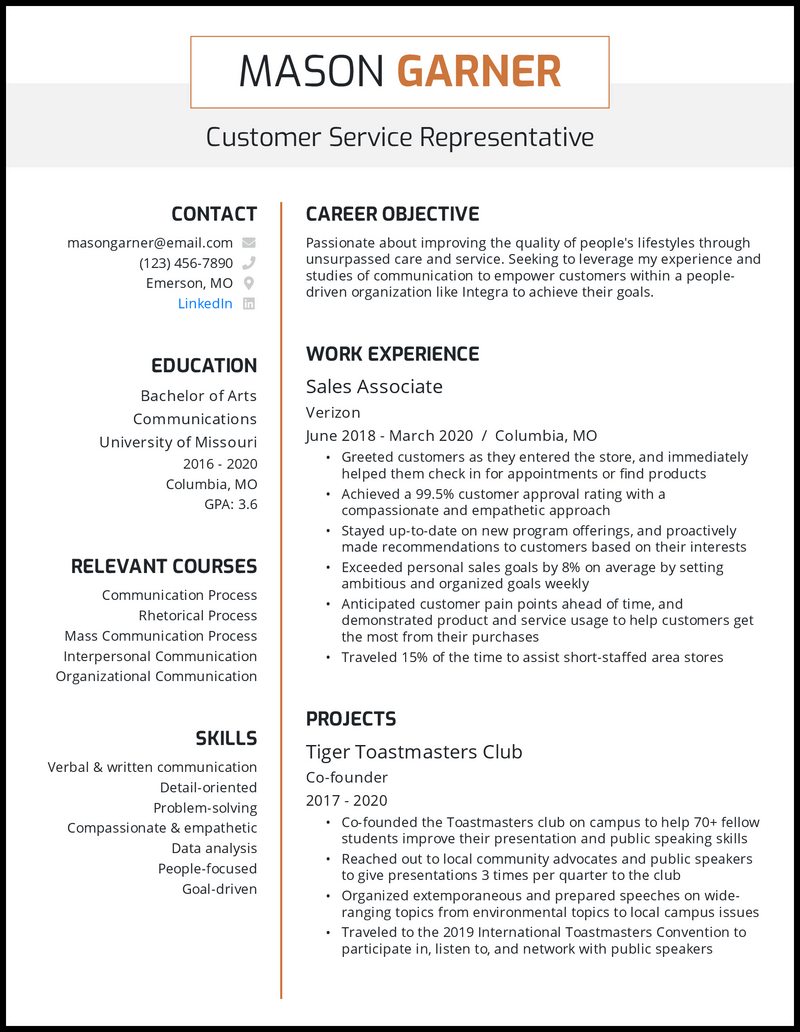
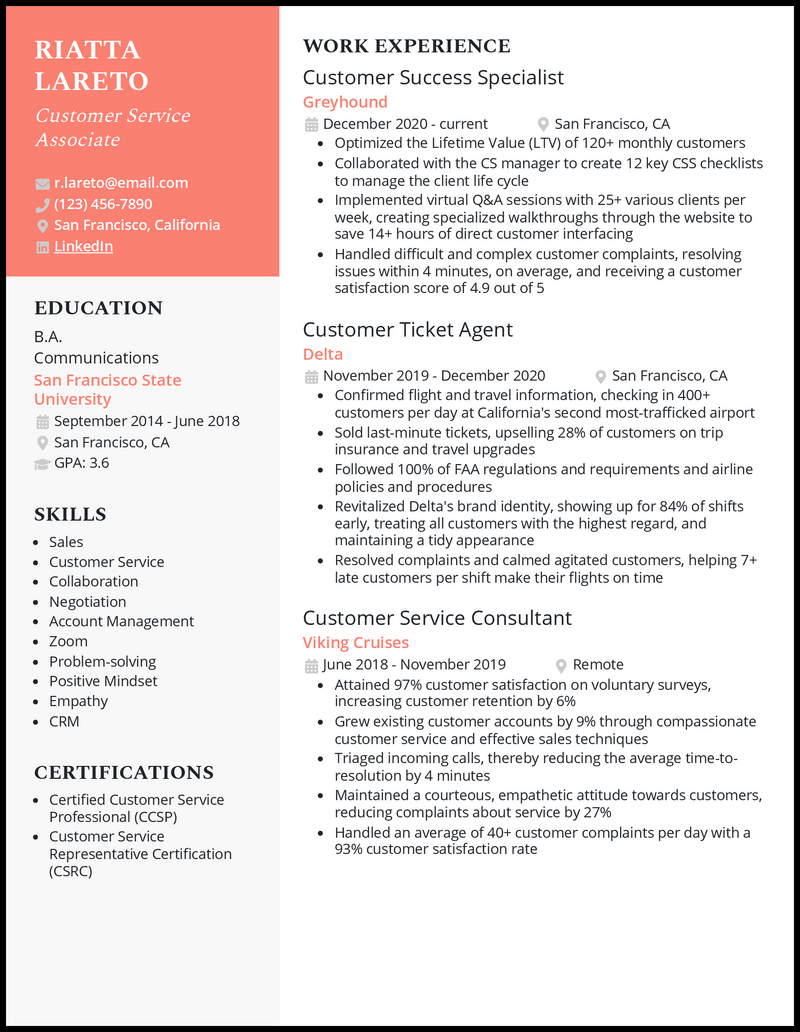
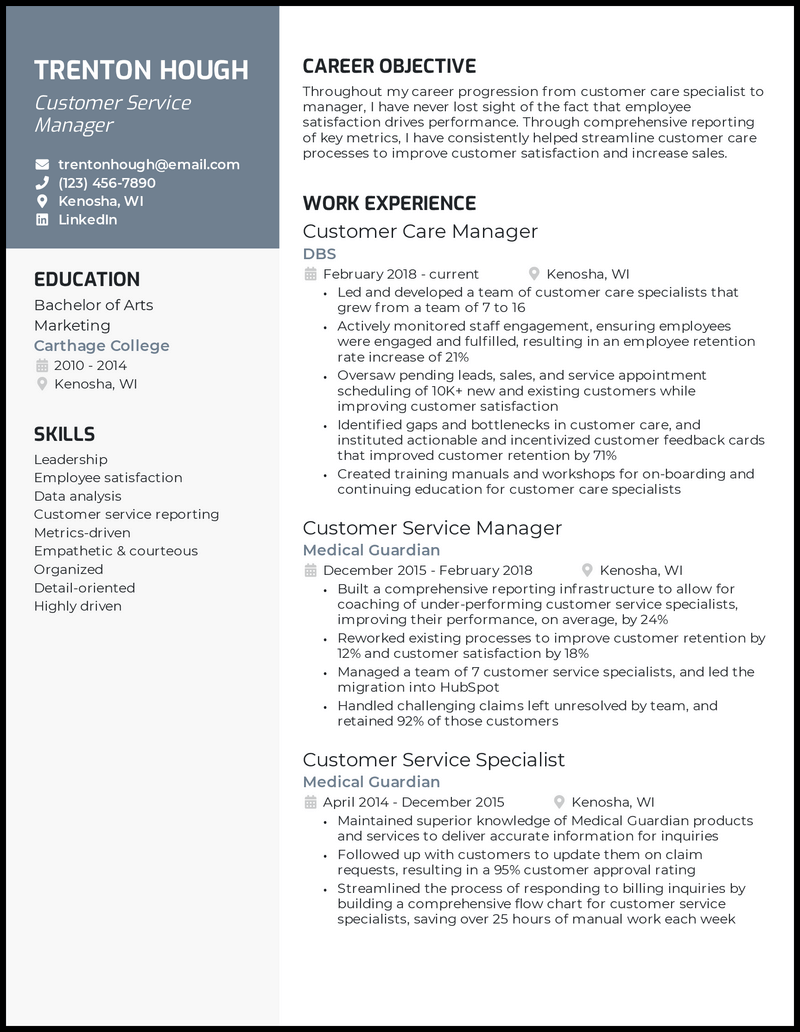








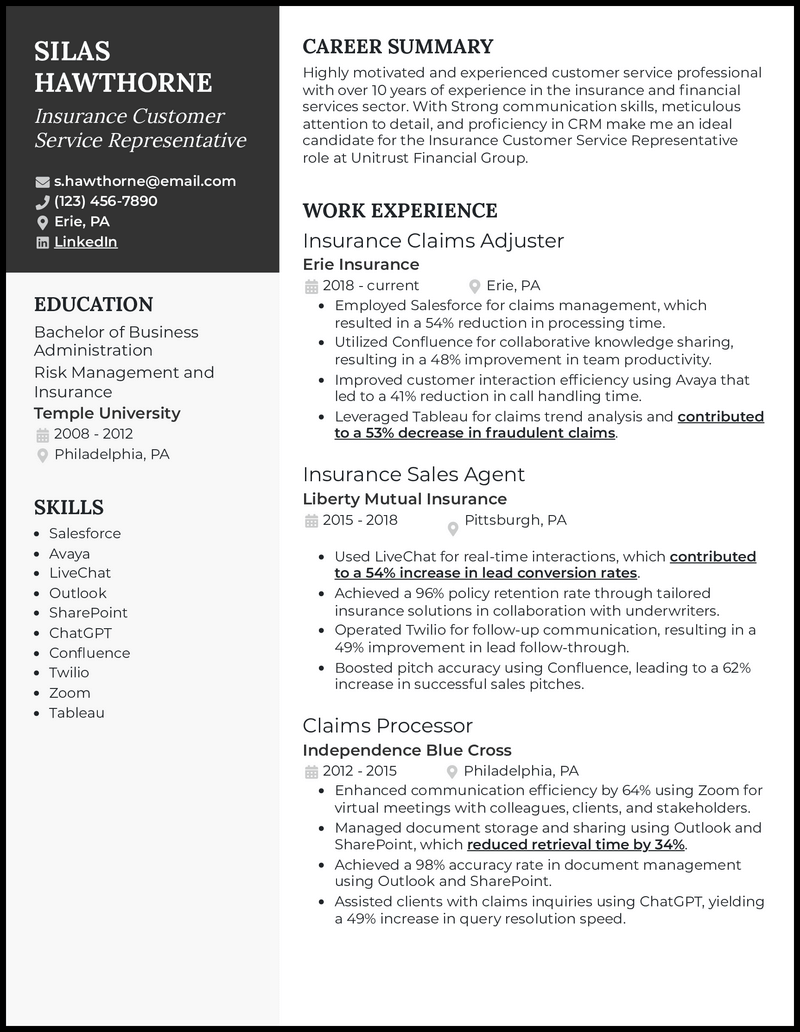

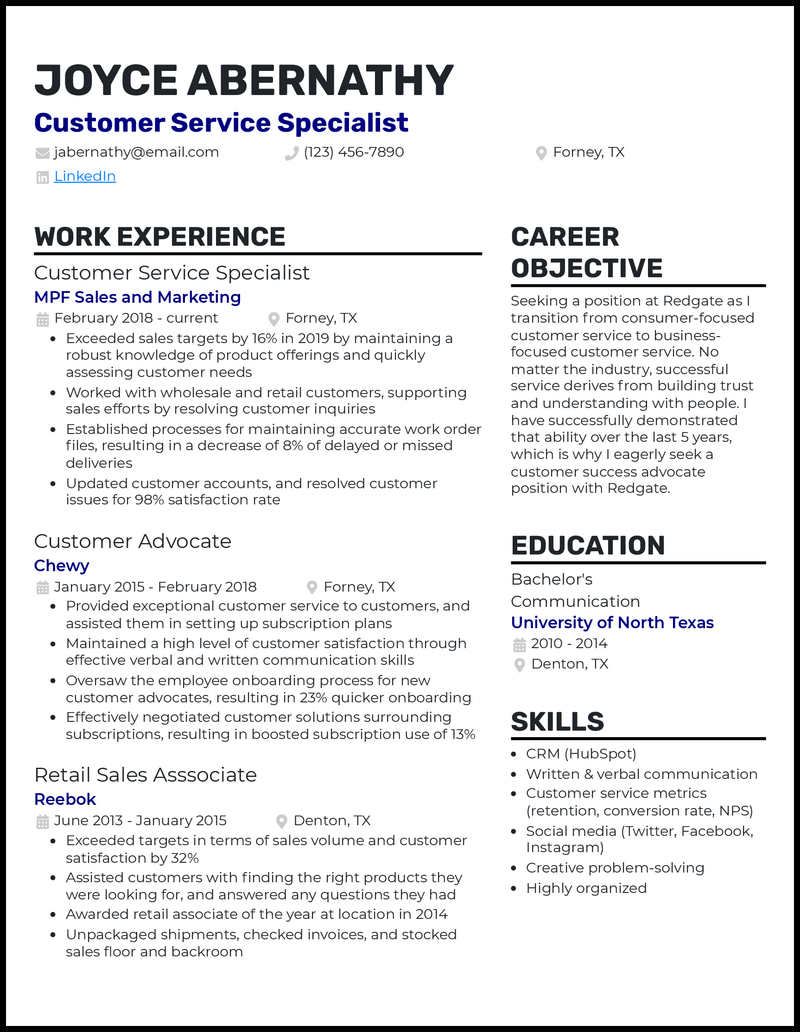
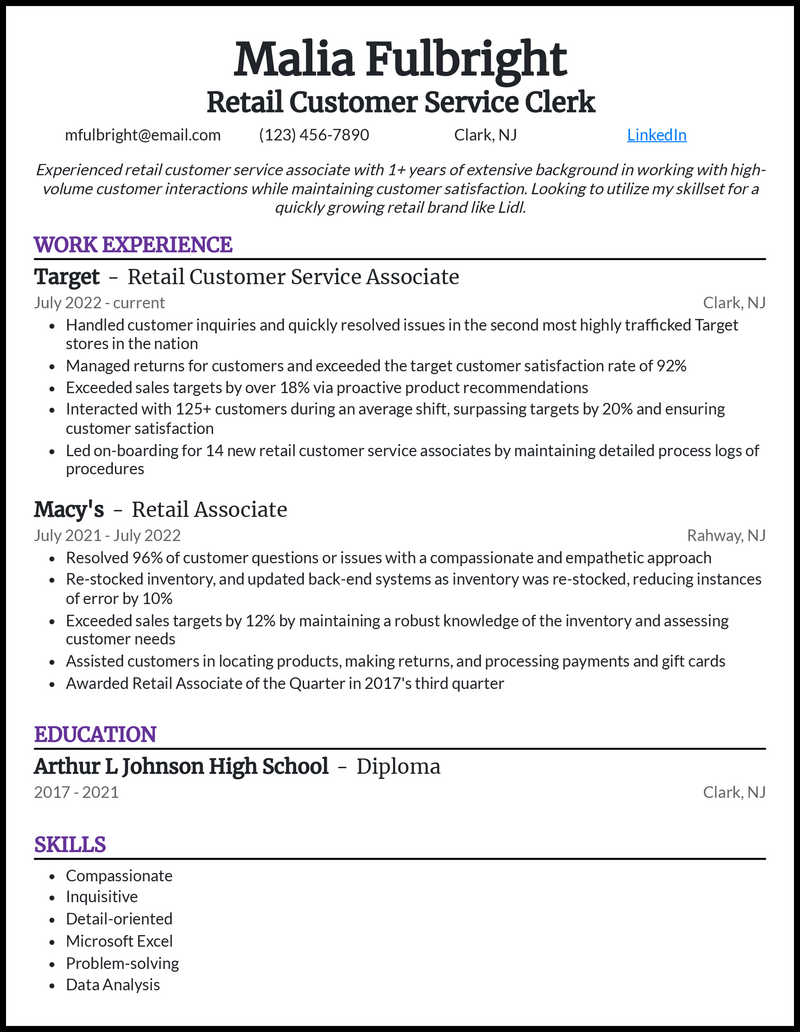
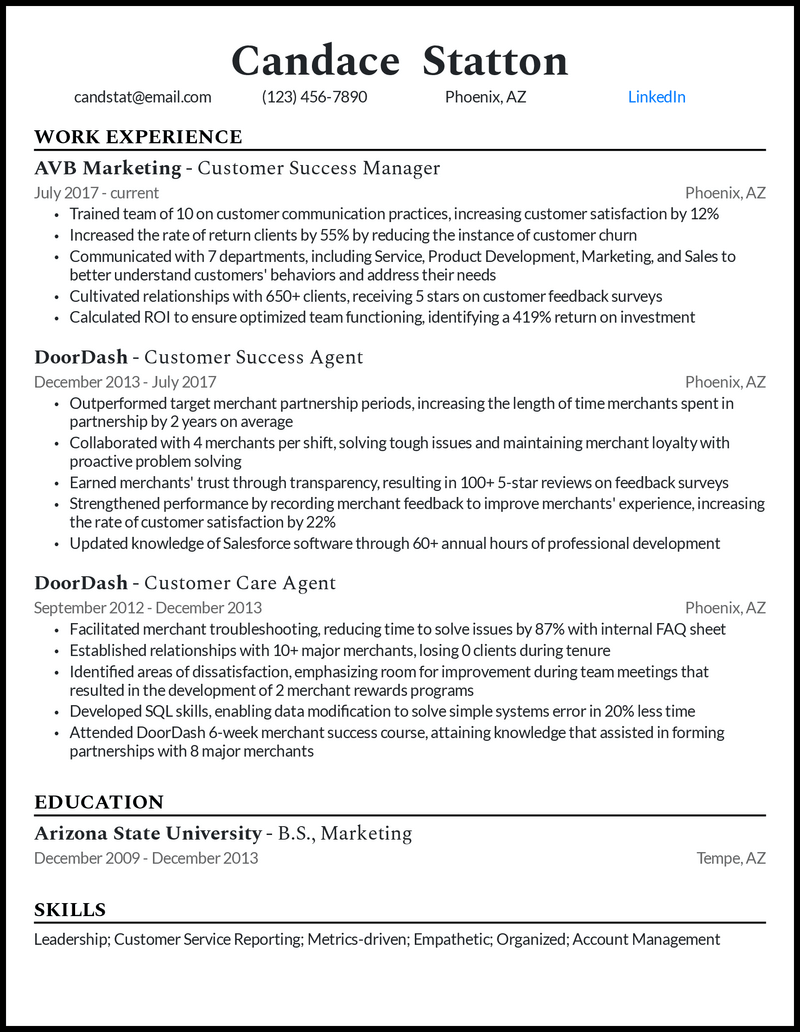

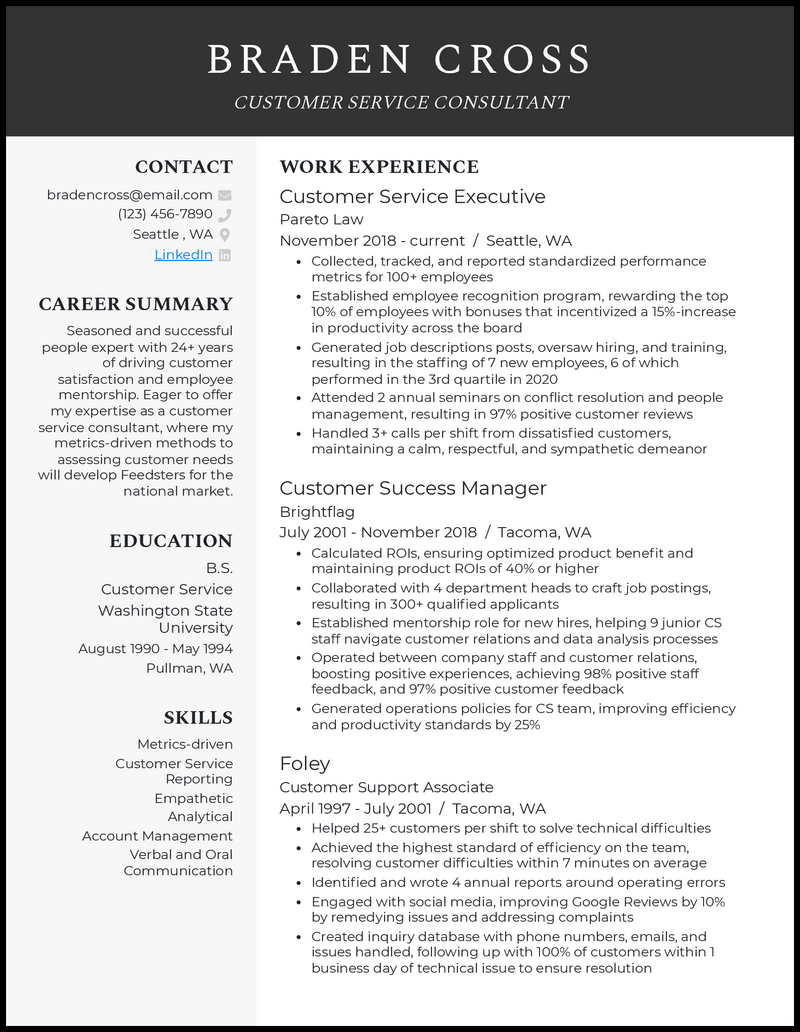
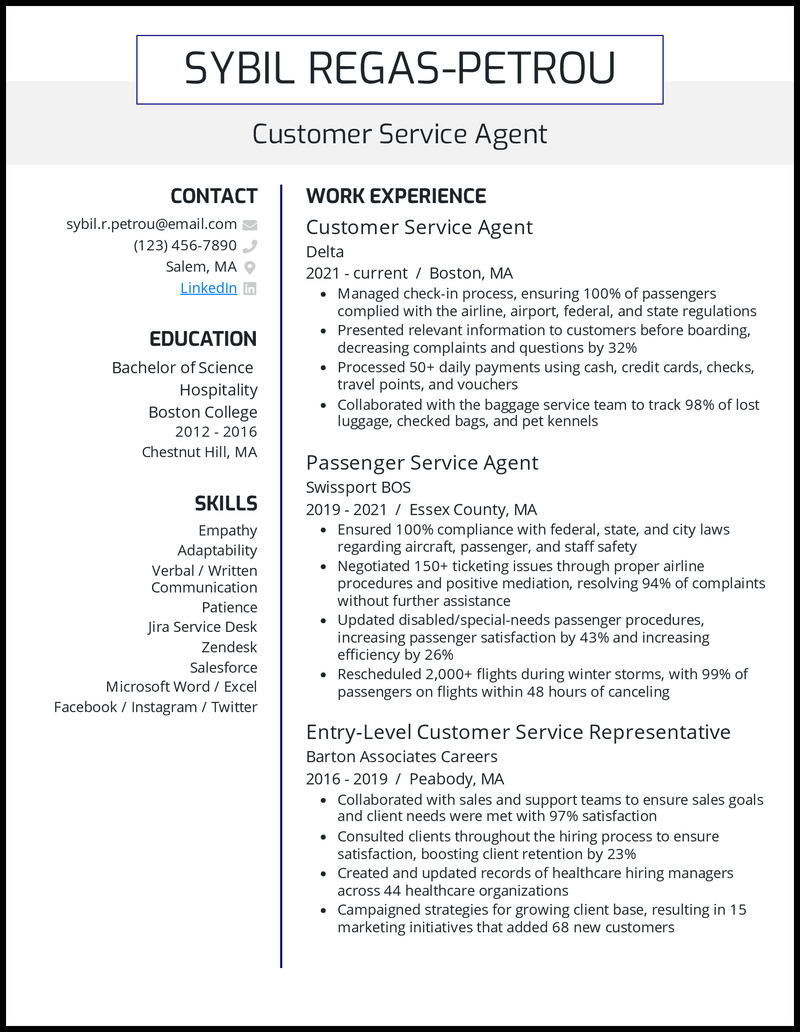
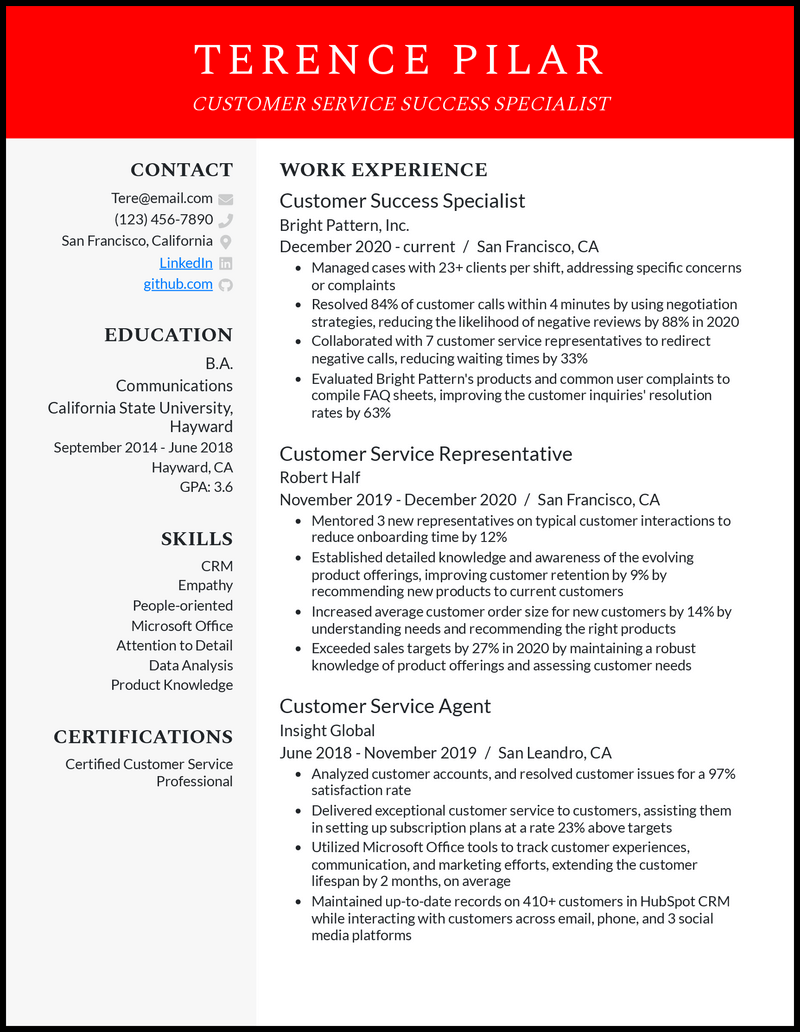


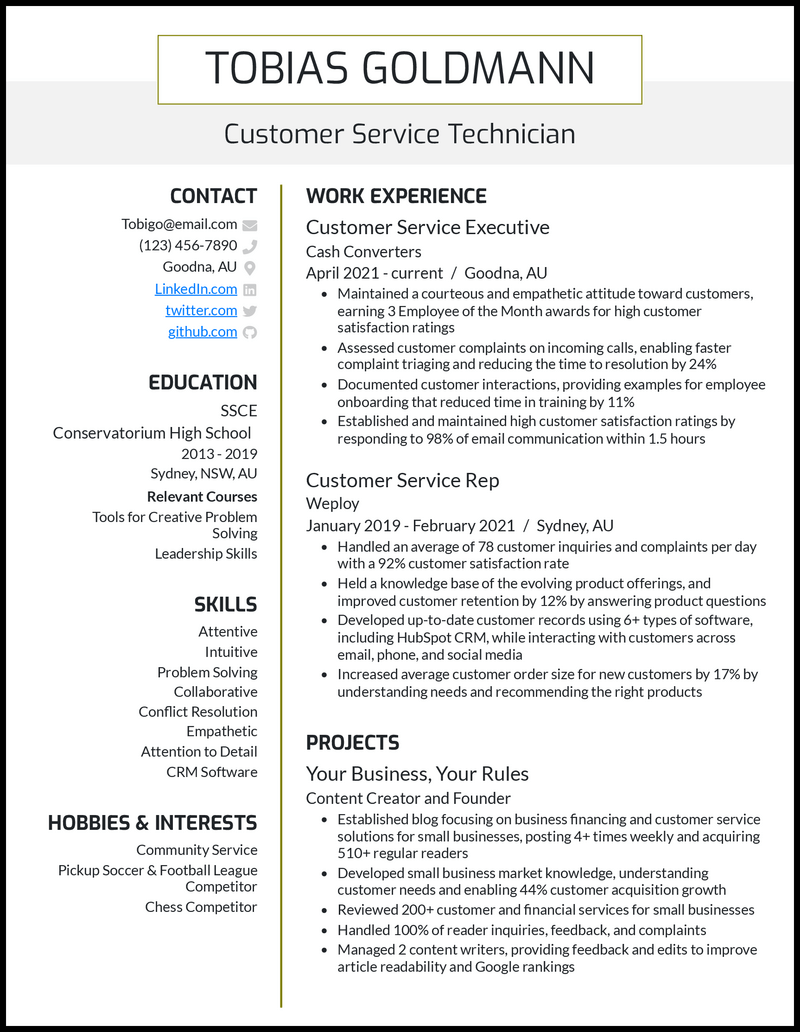
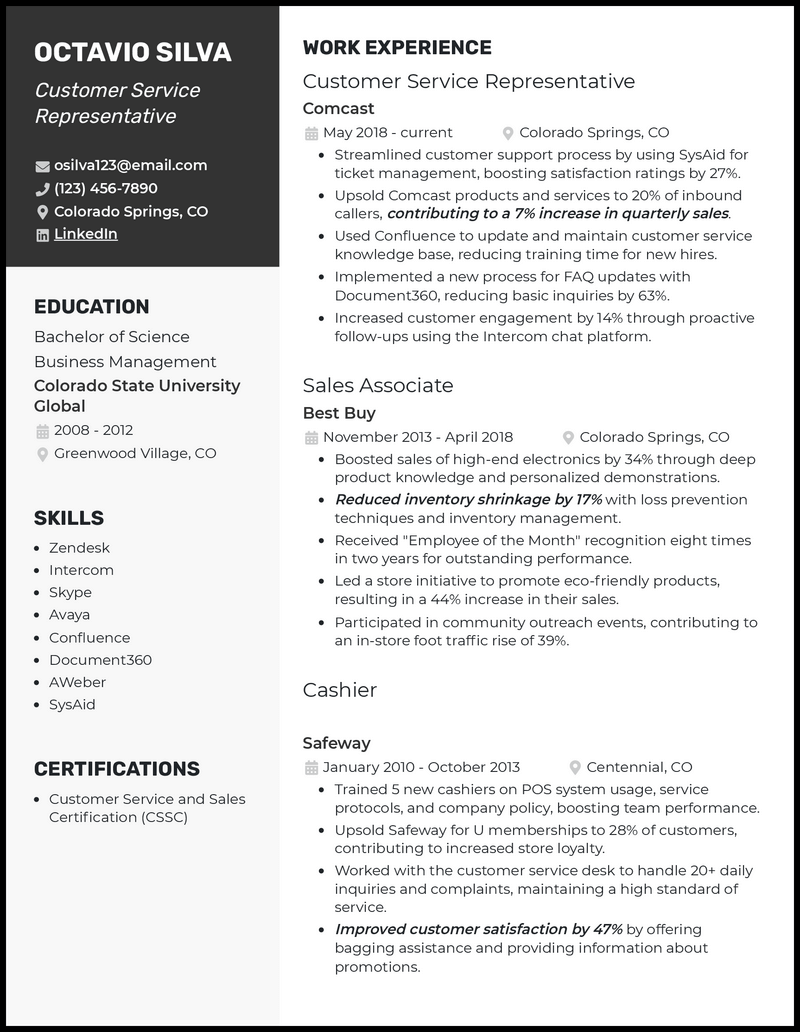
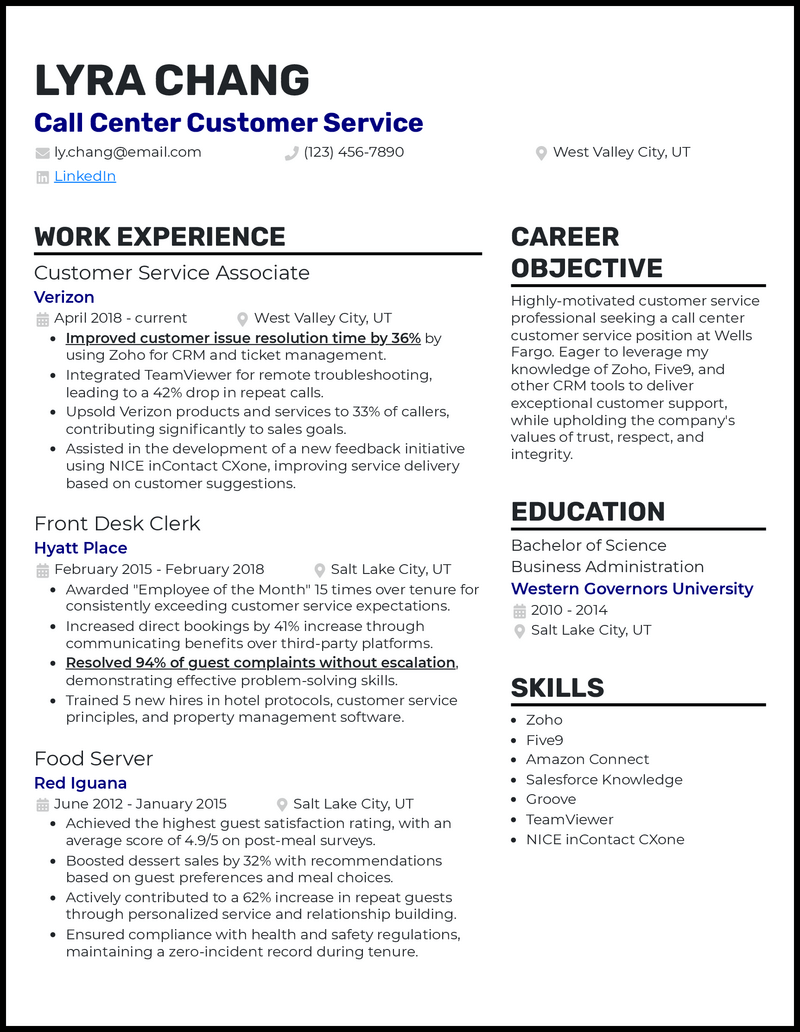
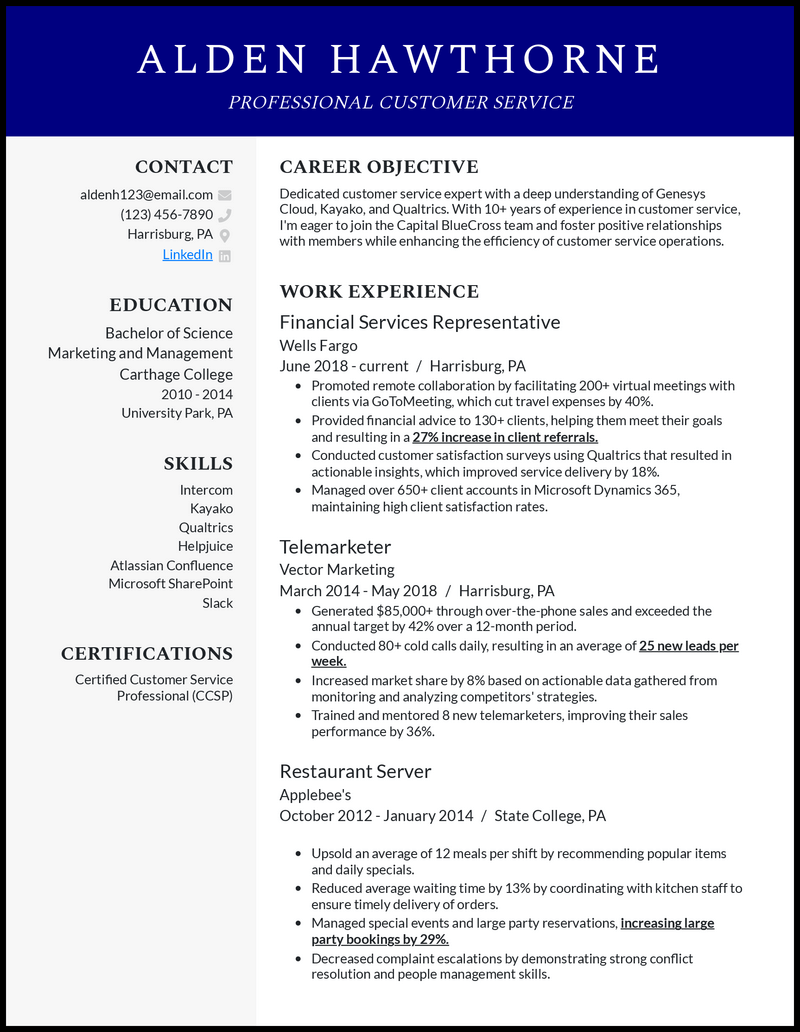
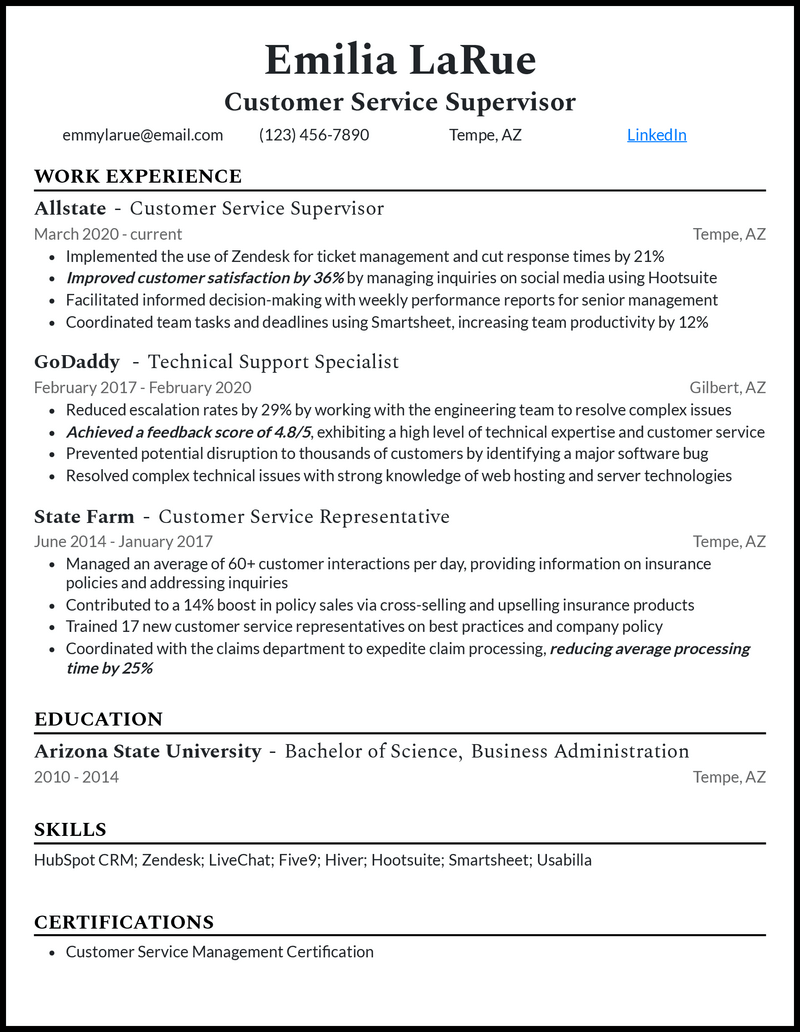
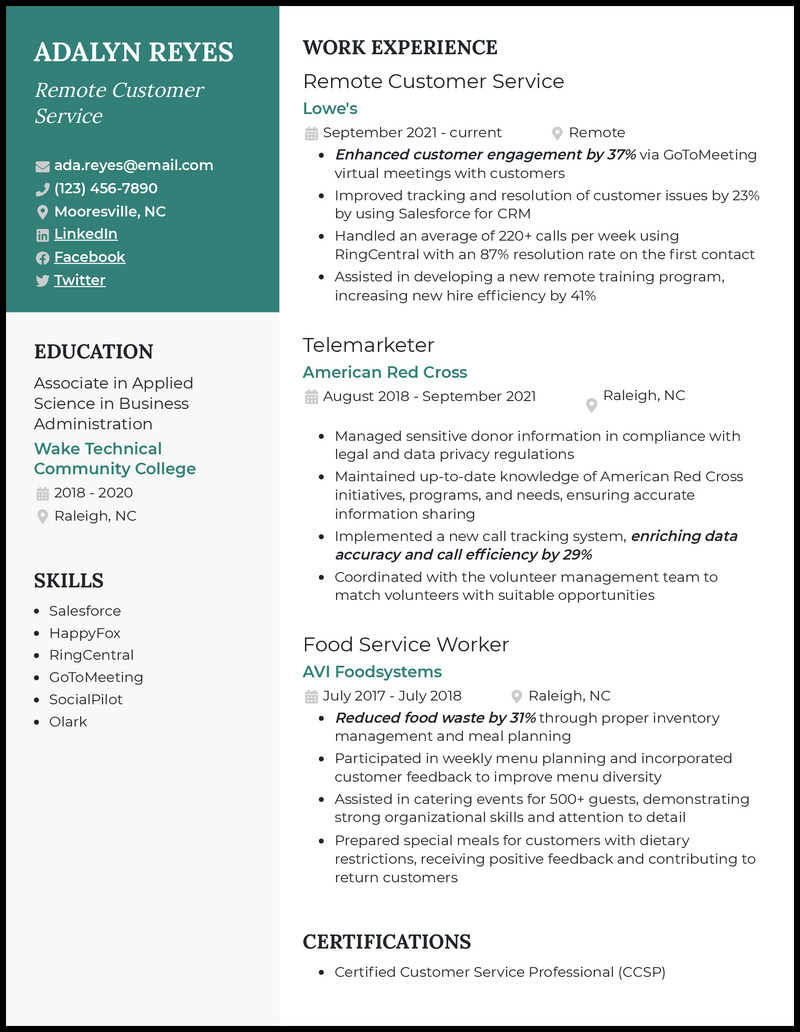
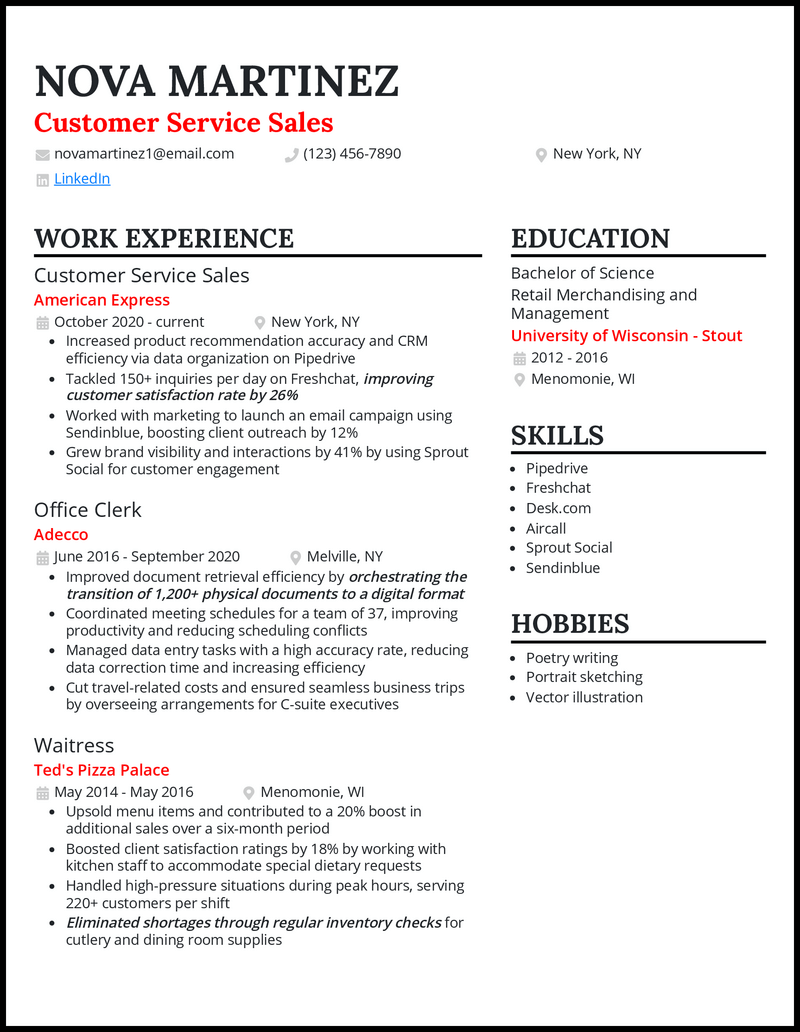
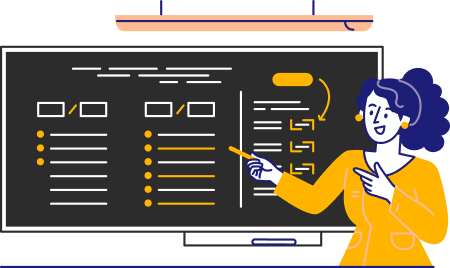
Customer service resumes have gone beyond a simple list of experiences and education that prove your worth. Now, they’re as varied as the candidates themselves. Before writing a resignation letter and applying for your next job, check out BeamJobs’ list of recommendations to make your resume sound professional, look neat, and prove without a doubt that you’re the best candidate. We’ll cover:
![]()
The skills section of a resume might be short, but it packs a punch. This is where you sell what you’re capable of and what you can do. This section is especially important for ATS to keep you in the running, so it’s crucial to pay attention to what skills you possess.
You should list both hard skills (like Microsoft Office Suite, HubSpot, or HelpDesk) and soft skills (like organization, problem-solving, and interpersonal communication). The best place to find applicable skills would be the job description itself—see what’s required for the tasks listed, and then use those tasks to steer you in the right direction.
Based on the job description, it’s clear this company values a bilingual, organized individual who is an effective communicator. These skills (as long as they accurately define you) should serve as the foundation of your skills section. And a word to the wise—don’t apply for a job if you can’t honestly say you own the skill set required.
Not every customer service job description will look like the one above, so your skills section should reflect the role for which you’re applying.
![]()
When you open the pages of a book, what’s more inviting: dense blocks of text with little color or short paragraphs with headings, indents, and plenty of white space? The latter is easier to read and, thus, more inviting. Your customer service resume needs to follow the same principle since it’s your first impression. Make the recruiter’s job as easy as possible by being neat, easy to read, and understandable.
There are multiple ways to achieve this, but one of the easiest is to put things in reverse-chronological format. This helps recruiters know immediately where you’re coming from. (For example, if you recently worked as a customer service representative, you’ll have a shorter adjustment period. And even if you were a customer service rep a few years ago, the reverse-chronological order will help recruiters quickly assess your qualifications.)
Objectives and summaries are a hot topic for resumes. It’s up to you to decide if an objective or summary is needed for your customer service resume. Typically, objectives/summaries are a good idea if you’re changing careers, you’re an entry-level applicant, or if you want to customize them for each application. Otherwise, it would be best to leave space for other things.
The difference between objectives and summaries rests in their purpose and your level of experience. Both are roughly two to three sentences, but an objective describes your interest and qualifications for the job while a summary highlights your past work. If you have limited experience, you should choose an objective to sell why you’re the best candidate, but if you’re years into customer service, you could include a summary to describe your unique background.
No matter if it’s a summary or an objective, it should always be concise, informative, and personal; this is your chance to show your personality and skills before the interview, so make it count.
When you write your objective, communicate your reason for applying and why you’d make a great candidate. Avoid making it generic, flat, or too casual:
Instead, your objective should be specific, detailed, and unique to both you and the job description. Try something that highlights your skills regardless of your experience level:

For those who have 10+ years of experience, a summary is the best way to go. Poor summaries have limited and vague information:
Rather, a summary should be a highlight reel of your accomplishments and expertise. To further showcase your talent, add metrics here, too:

This summary is tailored to the position and outlines the candidate’s experience and skills while being personable and not too formal. By carefully crafting your objective or summary, you can rise above the competition in just two to three sentences.
![]()
Leveraging metrics is all about avoiding generality and demonstrating success. Most job description bullets don’t describe how successful, friendly, or efficient you were. However, saying, “Assisted 200+ customers weekly with technical questions with a 98% customer satisfaction rate,” tells the recruiter the specifics of your talents and abilities.
Writing metrics for every single bullet point isn’t necessary, but including an estimate when you can is better than staying vague.
Now that you know what kind of metrics to include, below are some examples of how you can use them in practice. If you have trouble calculating some of the aforementioned metrics, HelpCrunch or Kustomer have some helpful formulas.
![]()
Just as every company is different, no customer service position is identical. So, why would you submit the same resume for multiple customer service job applications? Tailoring your resume shows you have researched the job and helps corroborate your candidacy.
Resumes are your first impression, so it’s important you make a good one. By taking the extra time to customize and adjust your customer service resume, you’ll catch the eye of hiring managers. With your list of relevant skills, professional formatting, specific job metrics, and customized additions, your resume is sure to stand out from the competition.
Upload your resume to our resume checker to see if your resume meets our AI-powered recommendations. If you’re starting from scratch, use the best free resume builder, which allows you to create resumes from the ground up with helpful hints and tools from BeamJobs. If you’ve made it this far, it’s safe to say you’re well on your way to crushing your customer service resume!